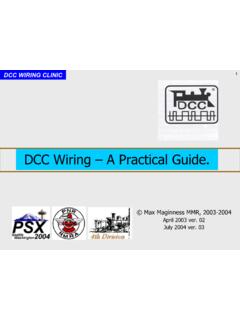Transcription of TN-013 APPLICATIONS
1 APPLICATIONSTN-013 Page 1 of 4 For additional technical notes, visit Simple Approach to Fast and practical Solid Phase Extraction (SPE) Method Development Michael Rummel, Terrell MathewsPhenomenex, Inc., 411 Madrid Ave., Torrance, CA 90501 USAS olid phase extraction is an effective technique for cleaning up and concentrating samples. In the following application note we outline a simple approach for solid phase extraction method development using Strata and Strata -X SPE 1. Sample Pre-treatment Reproducible, high efficiency solid phase extraction requires that the sample be made liquid prior to loading onto a SPE device.
2 The SPE sample should meet the following conditions:Liquid of low viscosity (to pass through the cartridge). Low solids or particulate contaminants (to prevent clog- ging).Solvent composition that is suitable for retention (each mechanism has different matrix solvent composition re-quirements for proper retention).Sample Pre-treatment RecommendationsBiological Samples (liquid) Urine, Whole blood, Serum, Plasma, Bile, sample 1:2 with appropriate buffer, precipitate proteins if proteinaceous (ZnSO4, ACN), hydrolyze urinary glucuronides, disruption of protein binding (sonication, enzymatic, acids/bases).
3 Biological Samples (solid)Organ tissues, Feces, GI contentsHomogenize with organic or aqueous solvent depending upon analyte solubility. Settle, decant, centrifuge or filter supernatant. Perform direct Matrix Solid Phase Dispersion (MSPD) extraction on MatrixWater (waste, river, etc.)Buffer to appropriate pH and filter particulates from , SludgeHomogenize with organic or aqueous solvent depending upon analyte solubility. Settle, decant and filter supernatant; perform Soxhlet , CreamsOil based:Dissolve in non-polar organic (hexane) and extract via polar based:Dissolve in water or water miscible organic (methanol) and extract via non-polar , Vegetable, HerbsHomogenize with organic or aqueous solvent depending upon analyte solubility and filter supernatant.
4 Use appropriate SPE mechanism for the dissolution solvent (hexane = polar mechanism; aqueous = non-polar mechanism; methanol/ACN = either non-polar or polar after proper dilution).SPe MechanismAnalyte Functional GroupSorbent Functional GroupStrata or Strata-X SorbentReversedPhaseRhydrocarbonaromatic RhydrocarbonaromaticC18-E, C18-U, C8 C18-T, X, XLPH, SDBL, X, XLNormalPhaseR - OHhydroxylR - NH2aminoCNpolarOHpolarCN, NH2Si-1, CN, EPHIon- ExchangeNR4+ strongRNH3+ weakRSO3- strongRCO2- weak-O2C weak-O3S strong+H3N weak+R3N strongWCX, X-CW, XL-CW Screen-C, SCX, X-C, Screen-A, SAX, X-A, XL-ANH2, X-AW, XL-AWXL-C PosNeg-AqueousWater, Urine, Plasma,Blood, AqueousTissue miscible, Methanol,Acetonitrile, AcetoneOrganicNot water miscible,Hexane.
5 DichloromethaneReversed Phase Strata-X, XL, C18, PH, C8 Ion-ExchangeStrata-X-C, X-CW, X-A, X-AW,XL-C, XL-CW,XL-A, XL-AW, SAX,SCX, WCX, NH2, ABW,Screen-A, Screen-CStrata-X-C, X-CW, X-A, X-AW, XL-C, XL-CW,XL-A, XL-AW, SAX,SCX, WCX, NH2, ABW,Screen-A, Screen-CNormal Phase Strata NH2, CN, Si-1, FL-PR, EPH, AL-N For ionic species onlyAdd H2 OAdd HexaneIon-ExchangeSTeP 2. Selecting Strata and Strata-X SorbentsIdentify the possible SPE retention mechanism: Reversed Phase (RP), Ion-Exchange (IEX) or Normal Phase (NP):The sample solvent composition will guide you towards an appropriate SPE the general mechanism is identified, it will be necessary to identify the most specific Strata or Strata-X sorbent by matching the analyte functional groups to the sorbent functional group.
6 STeP 3. Sorbent Mass SelectionTo select the proper sorbent mass, it is first necessary to determine the volume of sample needed to be extracted in order to meet method detection limits (not including buf-fer). Two tables are included below: Polymer-based and APPLICATIONSTN-013 Page 2 of 4 For additional technical notes, visit This is necessary because the large surface area of polymeric sorbents such as Strata -X have a higher analyte capacity per gram than Strata silica-based MethodEach SPE mechanism/phase has a general set of solvent condi-tions under which SPE may be performed.
7 Use the solvents/pH conditions listed below, volumes as determined in Method and Sorbent Volume Loading CapacityReversed Phase SPE MethodNormal Phase SPE MethodStrong Ion-Exchange SPE MethodSorbentSDB-L, C18, C8, PH, CN, X, XLSilica, Florisil , NH2, CNAnion exchange: Screen-A, SAX, X-A, X-AW, XL-A, XL-AW Cation exchange: Screen-C, SCX, X-C, X-CW, XL-C, XL-CWAnalyte PropertiesLow to moderate polarity (or non-polar)HydrophobicNeutralized/uncharg edPharmaceuticals Pesticides, herbicidesModerate to high polarity compounds (neutralized/uncharged)PesticidesIonized /charged compoundsAnion exchange: Acidic analytes Cation exchange: Basic drugsSample/MatrixAqueous, diluted with bufferBiological fluids WaterNon-polar organic solvents or moderately polar organic solventsHexane, chloroform, petroleum ether, toluene or methylene chlorideAqueous.
8 Low ionic strength buffers (<30 mM), pH adjustedBiological fluids plus bufferConditioning Step 1. Solvation polar organic solvents2. Equilibration aqueous, buffers1. Methanol2. Water or buffer1. Solvation polar organic solvents (optional)2. Equilibration sample/matrix solvent1. Methanol (optional) 2. Hexane or chloroform1. Conditioning polar organic solvents 2. Equilibration low ionic strength buffers, pH adjusted1. Methanol2. 25 mM Tris-OAc, pH 7 Wash Step Aqueous buffers with 5 to 50 % polar organic solventMethanol: Water (5:95)Non-polar organic solvents with a low concentration (1 to 5 %) of moderate to low polarity organic solventsHexane with 1 % THF, ethyl acetate, acetone, acetonitrile or IPAA queous buffers of low salt concentrations with or without organic solventAnion exchange: Buffer pH 7: Methanol (50:50) Cation exchange:1.
9 Buffer pH 62. 1 M acetic acid3. MethanolElution StepPolar or non-polar organic solvent(s) with or without water, buffer and/or strong acid or baseMethanol: Acetonitrile (50:50)Non-polar organic solvents containing higher concentrations (5 to 50 %) of moderate to high polarity organic solventsHexane with 10 % THF, ethyl acetate, acetone, acetonitrile or IPA Neutralize the charge on the weak anion or cation Increase the ionic strength and counter ion concentration Add a strong counter ion displacerAnion exchange: Hexane: ethyl acetate (75:25) +1 % glacial acetic acid Cation exchange.
10 Methanol + 5 % NH3 STeP 4. Method and Sorbent Volume SelectionThe volume of solvent needed for SPE processing is directly related to the mass of sorbent in the SPE tube and more specifically the bed volume of the SPE device. Intuitively we know more sorbent requires more solvent, less sorbent = less solvent. Typically 4 16 bed volumes are used in SPE MatrixSorbent MassStrata-X, X-C, X-CW, X-A, X-AWStrata-XL, XL-C, XL-CW, XL-A, XL-AWBlood, serum, plasma30 mg250 L125 LUrine30 mg1 mL500 LFiltered tissue homogenates60 mg100 mg50 mgEnvironmental SamplesSorbent MassStrata-X, X-C, X-CW, X-A, X-AWStrata-XL, XL-C, XL-CW, XL-A, XL-AWWater (particulate-free) drinking200 mg100 - 400 mL50 - 200 mLWater (particulate-laden) rivers, runoff, mg100 - 400 mL50 - 200 mLSoil extracts500 mg100 g50 gTable Sorbents (Strata C18, C8, SCX, SAX, WCX, NH2, etc.)







